As this is a curated collection of books from a personal library, please be mindful that some books may be out of print, have more current editions, or be available in digital formats. A large portion of the books presented are related to research and reference.
Architecture
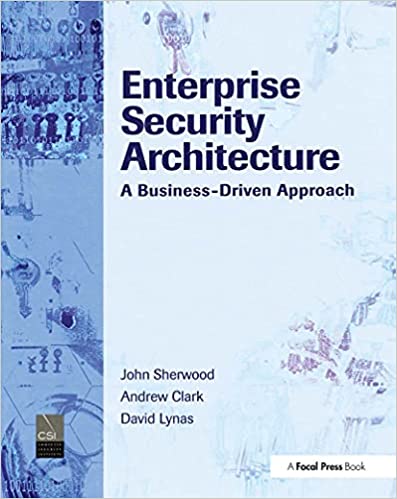
Security is too important to be left in the hands of just one department or employee―it’s a concern of an entire enterprise. Enterprise Security Architecture shows that having a comprehensive plan requires more than the purchase of security software―it requires a framework for developing and maintaining a system that is proactive. The book is based around the SABSA layered framework. It provides a structured approach to the steps and processes involved in developing security architectures. It also considers how some of the major business issues likely to be encountered can be resolved.

The TOGAF standard is a framework - a detailed method and a set of supporting tools - for developing an Enterprise Architecture developed by members of The Open Group Architecture Forum. The TOGAF Standard, Version 9.2T is an update providing additional guidance, correcting errors, introducing structural changes to support the TOGAF Library (an extensive collection of reference material), and removing obsolete content. It may be used freely by any organization wishing to develop an Enterprise Architecture for use within that organization (subject to the Conditions of Use).TOGAF 10 Digital version is available on the Open Group website.
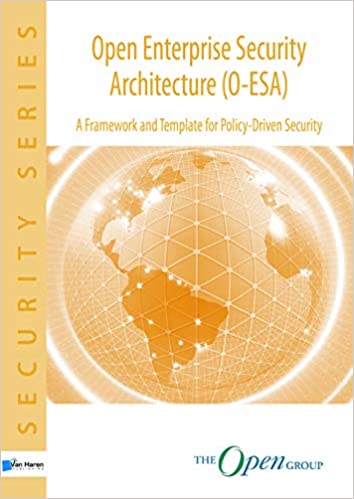
Information Security professionals today have to be able to demonstrate their security strategies within clearly demonstrable frameworks, and show how these are driven by their organization's business priorities, derived from sound risk management assessments. This Open Enterprise Security Architecture (O-ESA) Guide provides a valuable reference resource for practicing security architects and designers explaining the key security issues, terms, principles, components, and concepts underlying security-related decisions that security architects and designers have to make. In doing so it helps in explaining their security architectures and related decision-making processes to their enterprise architecture colleagues.
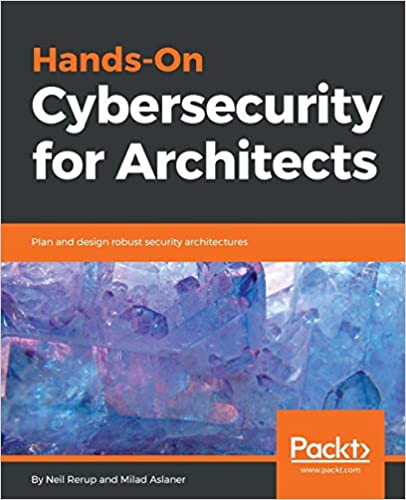
Solutions in the IT domain have been undergoing massive changes. There was a time when bringing your own devices to work was like committing a crime. However, with an evolving IT industry comes emerging security approaches. Hands-On Cybersecurity for Architects will help you to successfully design, integrate, and implement complex security structures in any solution whilst ensuring that the solution functions as expected. To start with, you will get to grips with the fundamentals of recent cybersecurity practices, followed by acquiring and understanding your organization's requirements. You will then move on to learning how to plan and design robust security architectures, along with practical approaches to performing various security assessments. Once you have grasped all this, you will learn to design and develop key requirements, such as firewalls, virtual private networks (VPNs), wide area networks (WANs), and digital certifications. In addition to this, you will discover how to integrate upcoming security changes on Bring your own device (BYOD), cloud platforms, and the Internet of Things (IoT), among others. Finally, you will explore how to design frequent updates and upgrades for your systems as per your enterprise's needs.Out of Print.
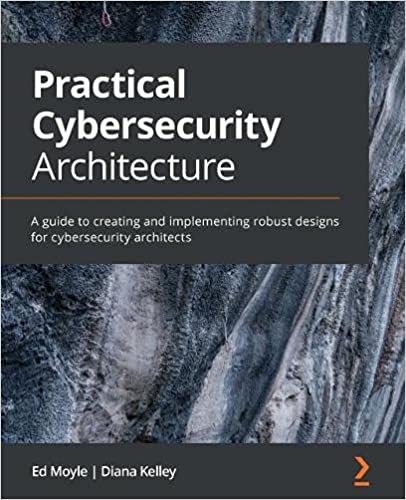
Cybersecurity architects work with others to develop a comprehensive understanding of the business' requirements. They work with stakeholders to plan designs that are implementable, goal-based, and in keeping with the governance strategy of the organization.With this book, you'll explore the fundamentals of cybersecurity architecture: addressing and mitigating risks, designing secure solutions, and communicating with others about security designs. The book outlines strategies that will help you work with execution teams to make your vision a concrete reality, along with covering ways to keep designs relevant over time through ongoing monitoring, maintenance, and continuous improvement. As you progress, you'll also learn about recognized frameworks for building robust designs as well as strategies that you can adopt to create your own designs.By the end of this book, you will have the skills you need to be able to architect solutions with robust security components for your organization, whether they are infrastructure solutions, application solutions, or others.
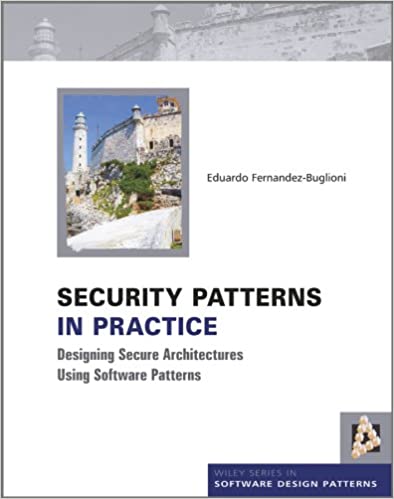
Learn to combine security theory and code to produce secure systemsSecurity is clearly a crucial issue to consider during the design and implementation of any distributed software architecture. Security patterns are increasingly being used by developers who take security into serious consideration from the creation of their work. Written by the authority on security patterns, this unique book examines the structure and purpose of security patterns, illustrating their use with the help of detailed implementation advice, numerous code samples, and descriptions in UML.
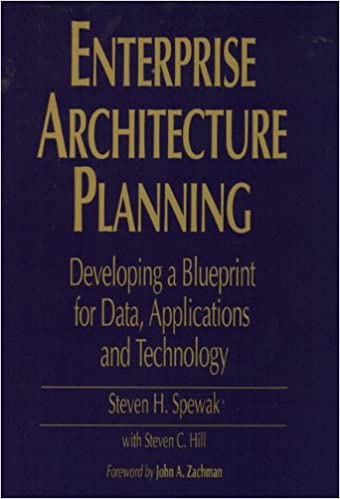
Praise for Enterprise Architecture Planning"... the book has given me a wealth of good, fresh ideas about every facet of the architecture process ... makes a substantive contribution to the body of IS planning knowledge."―John A. Zachman Zachman, Information SystemsEnterprise Architecture Planning is more advanced than traditional system planning approaches because you: • define a stable business model independent of organizational boundaries, systems, and procedures, • define data before application, and • let data determine the sequence for implementing applications systems.Here the authors give you a common-sense approach to Enterprise Architecture Planning. You'll find dozens of examples of architectures, procedures, checklists, and useful guidelines to support these techniques. This is the best guide available to help you ensure a cost-effective, long-term solution.
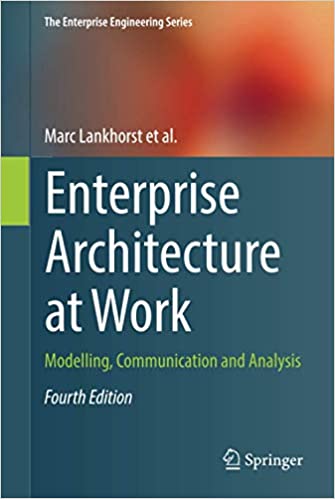
Lankhorst and his co‑authors present ArchiMate® 3.0, enterprise modelling language that captures the complexity of architectural domains and their relations and allows the construction of integrated enterprise architecture models. They provide architects with concrete instruments that improve their architectural practice. As this is not enough, they additionally present techniques and heuristics for communicating with all relevant stakeholders about these architectures. Since an architecture model is useful not only for providing insight into the current or future situation but can also be used to evaluate the transition from ‘as‑is’ to ‘to‑be’, the authors also describe analysis methods for assessing both the qualitative impact of changes to an architecture and the quantitative aspects of architectures, such as performance and cost issues.The modelling language presented has been proven in practice in many real‑life case studies and has been adopted by The Open Group as an international standard. So this book is an ideal companion for enterprise IT or business architects in industry as well as for computer or management science students studying the field of enterprise architecture.This fourth edition of the book has been completely reworked to be compatible with ArchiMate® 3.0, and it includes a new chapter relating this new version to other standards. New sections on capability analysis, risk analysis, and business architecture in general have also been introduced.
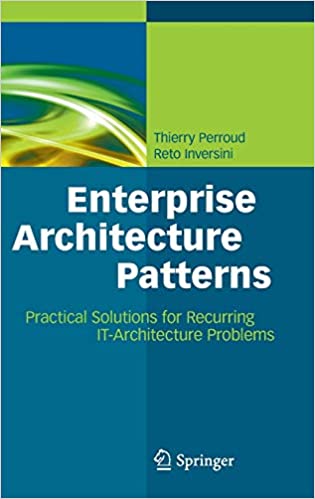
Every enterprise architect faces similar problems when designing and governing the enterprise architecture of a medium to large enterprise. Design patterns are a well-established concept in software engineering, used to define universally applicable solution schemes. By applying this approach to enterprise architectures, recurring problems in the design and implementation of enterprise architectures can be solved over all layers, from the business layer to the application and data layer down to the technology layer.Inversini and Perroud describe patterns at the level of enterprise architecture, which they refer to as Enterprise Architecture Patterns. These patterns are motivated by recurring problems originating from both the business and the underlying application, or from data and technology architectures of an enterprise such as identity and access management or integration needs. The Enterprise Architecture Patterns help in planning the technological and organizational landscape of an enterprise and its information technology, and are easily embedded into frameworks such as TOGAF, Zachman or FEA.This book is aimed at enterprise architects, software architects, project leaders, business consultants and everyone concerned with questions of IT and enterprise architecture and provides them with a comprehensive catalogue of ready-to-use patterns as well as an extensive theoretical framework to define their own new patterns.
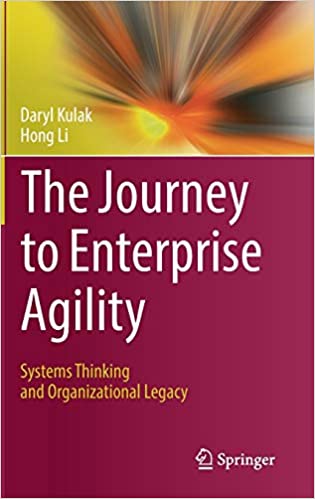
This is the first book to seriously address the disconnection between nimble Agile teams and other groups in the enterprise, including enterprise architecture, the program management office (PMO), human resources, and even business executives.When an enterprise experiments with practice improvements, software development teams often jump on board with excitement, while other groups are left to wonder how they will fit in.We address how these groups can adapt to Agile teams. More importantly, we show how many Agile teams cause their own problems, damaging scalability and sustainability, by requiring special treatment, and by failing to bridge the gaps between themselves and other groups. We call this phenomenon “Agile illth.”Adopting a set of “best practices” is not enough. All of us, Agile teams and the corporate groups, must change our intentions and worldviews to be more compatible with the success of the enterprise.Join us on the journey to enterprise agility. It is a crooked path, fraught with danger, confusion and complexity. It is the only way to reach the pinnacles we hope to experience in the form of better business value delivered faster for less cost.
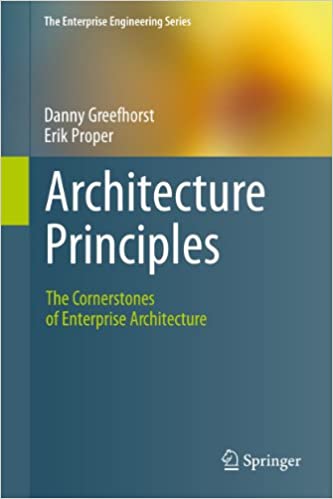
Enterprises, from small to large, evolve continuously. As a result, their structures are transformed and extended continuously. Without some means of control, such changes are bound to lead to an overly complex, uncoordinated and heterogeneous environment that is hard to manage and hard to adapt to future changes. Enterprise architecture principles provide a means to direct transformations of enterprises. As a consequence, architecture principles should be seen as the cornerstones of any architecture.In this book, Greefhorst and Proper focus on the role of architecture principles. They provide both a theoretical and a practical perspective on architecture principles. The theoretical perspective involves a brief survey of the general concept of principle as well as an analysis of different flavors of principles. Architecture principles are regarded as a specific class of normative principles that direct the design of an enterprise, from the definition of its business to its supporting IT. The practical perspective on architecture principles is concerned with an approach to the formulation of architecture principles, as well as their actual use in organizations. To illustrate their use in practice, several real-life cases are discussed, an application of architecture principles in TOGAF is included, and a catalogue of example architecture principles is provided.With this broad coverage, the authors target students and researchers specializing in enterprise architecture or business information systems, as well as practitioners who want to understand the foundations underlying their practical daily work.
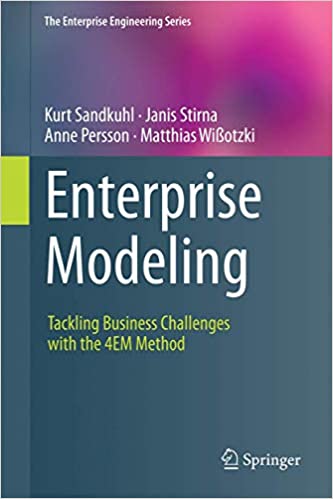
Enterprise modeling (EM) methods and techniques are indispensable for understanding the present situation of an enterprise and for preparing for its future – particularly in times of continuous organizational change, an increasing pace of innovation, new market challenges or technology advances.The authors combine a detailed description of the 4EM methodology with their concrete experience gathered in projects. Their book addresses the modeling procedure, modeling language and modeling practices in a uniquely integrated approach. It provides practical advice on common challenges faced by enterprises and offers a flexible EM method suitable for tackling those challenges. Much of the work presented stems from actual research projects and has been validated with scientific methods. The 4EM methodology has proven its practical value in a large number of successful development and/or change management projects in industry and the public sector.The book was written for anyone who wants to learn more about EM, with a specific focus on how to do it in practice and/or how to teach it. Its main target audience thus includes instructors in the field of EM or business information systems, students in Information Systems or Business Administration, and practitioners working in enterprise or change management. The authors describe a clear reading path for each of these audiences and complement the work with a set of slides and further teaching material available under www.43m-method.com.
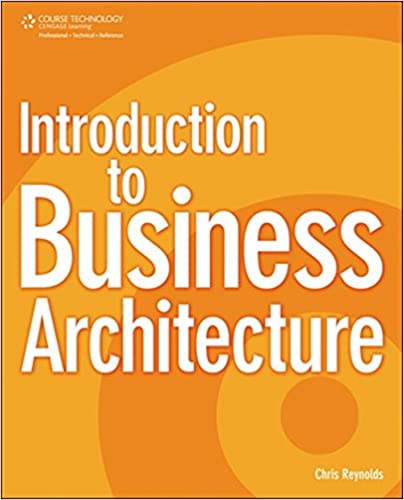
Business Architecture is a disciplined approach to creating and maintaining business models that enhance enterprise accountabilities and improve decision-making. Business Architecture's value proposition, unlike other disciplines, is to increase organizational effectiveness by mapping and modeling the business to the organization's business vision and strategic goals. The book is an introduction to this burgeoning new field. It explains what Business Architecture is, what a good, sustainable one should include, and explains how to implement a business architecture practically within the reader's environment. Extensive examples and case studies are included to clarify points and demonstrate clearly to the reader how they too can begin to build business architecture within their organization.
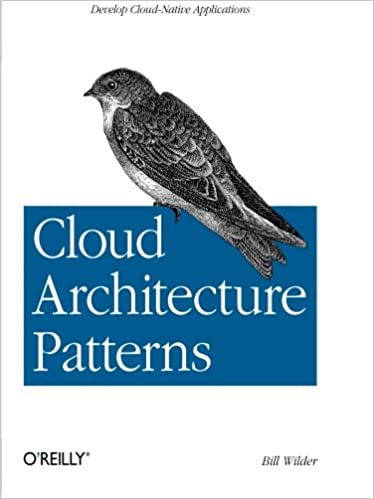
If your team is investigating ways to design applications for the cloud, this concise book introduces 11 architecture patterns that can help you take advantage of cloud-platform services. You’ll learn how each of these platform-agnostic patterns work, when they might be useful in the cloud, and what impact they’ll have on your application architecture. You’ll also see an example of each pattern applied to an application built with Windows Azure.The patterns are organized into four major topics, such as scalability and handling failure, and primer chapters provide background on each topic. With the information in this book, you’ll be able to make informed decisions for designing effective cloud-native applications that maximize the value of cloud services, while also paying attention to user experience and operational efficiency.

An expert guide to selecting the right cloud service model for your businessCloud computing is all the rage, allowing for the delivery of computing and storage capacity to a diverse community of end-recipients. However, before you can decide on a cloud model, you need to determine what the ideal cloud service model is for your business. Helping you cut through all the haze, Architecting the Cloud is vendor neutral and guides you in making one of the most critical technology decisions that you will face: selecting the right cloud service model(s) based on a combination of both business and technology requirements.
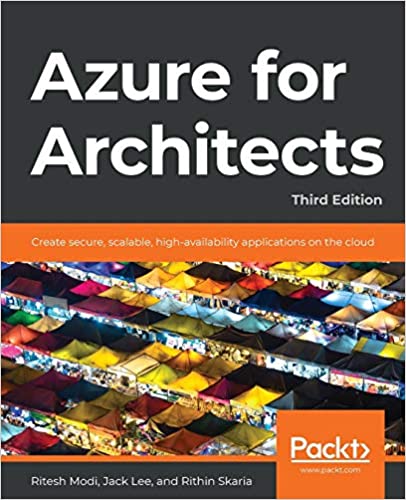
Thanks to its support for high availability, scalability, security, performance, and disaster recovery, Azure has been widely adopted to create and deploy different types of application with ease. Updated for the latest developments, this third edition of Azure for Architects helps you get to grips with the core concepts of designing serverless architecture, including containers, Kubernetes deployments, and big data solutions.You'll learn how to architect solutions such as serverless functions, you'll discover deployment patterns for containers and Kubernetes, and you'll explore large-scale big data processing using Spark and Databricks. As you advance, you'll implement DevOps using Azure DevOps, work with intelligent solutions using Azure Cognitive Services, and integrate security, high availability, and scalability into each solution. Finally, you'll delve into Azure security concepts such as OAuth, OpenConnect, and managed identities.By the end of this book, you'll have gained the confidence to design intelligent Azure solutions based on containers and serverless functions.

Azure offers a wide range of services that enable a million ways to architect your solutions. Complete with original maps and expert analysis, this book will help you to explore Azure and choose the best solutions for your unique requirements.Starting with the key aspects of architecture, this book shows you how to map different architectural perspectives and covers a variety of use cases for each architectural discipline. You'll get acquainted with the basic cloud vocabulary and learn which strategic aspects to consider for a successful cloud journey. As you advance through the chapters, you'll understand technical considerations from the perspective of a solutions architect. You'll then explore infrastructure aspects, such as network, disaster recovery, and high availability, and leverage Infrastructure as Code (IaC) through ARM templates, Bicep, and Terraform. The book also guides you through cloud design patterns, distributed architecture, and ecosystem solutions, such as Dapr, from an application architect's perspective. You'll work with both traditional (ETL and OLAP) and modern data practices (big data and advanced analytics) in the cloud and finally get to grips with cloud native security.By the end of this book, you'll have picked up best practices and more rounded knowledge of the different architectural perspectives.
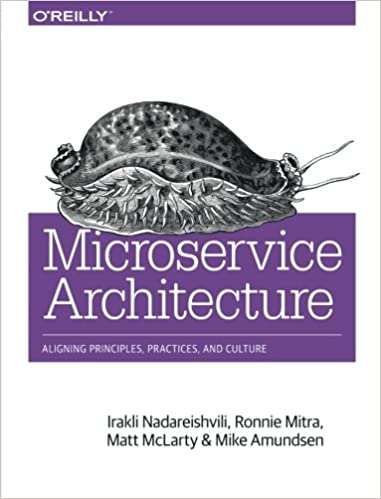
Microservices can have a positive impact on your enterprise—just ask Amazon and Netflix—but you can fall into many traps if you don’t approach them in the right way. This practical guide covers the entire microservices landscape, including the principles, technologies, and methodologies of this unique, modular style of system building. You’ll learn about the experiences of organizations around the globe that have successfully adopted microservices.In three parts, this book explains how these services work and what it means to build an application the Microservices Way. You’ll explore a design-based approach to microservice architecture with guidance for implementing various elements. And you’ll get a set of recipes and practices for meeting practical, organizational, and cultural challenges to microservice adoption.
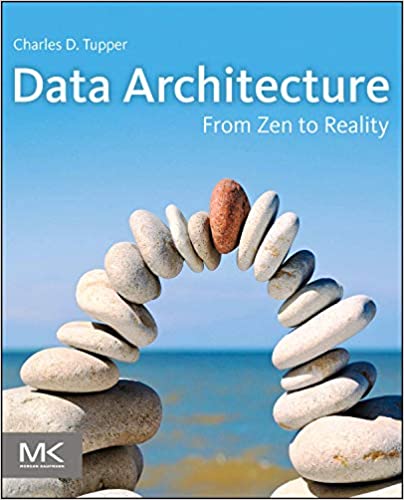
Data Architecture: From Zen to Reality explains the principles underlying data architecture, how data evolves with organizations, and the challenges organizations face in structuring and managing their data. Using a holistic approach to the field of data architecture, the book describes proven methods and technologies to solve the complex issues dealing with data. It covers the various applied areas of data, including data modelling and data model management, data quality, data governance, enterprise information management, database design, data warehousing, and warehouse design. This text is a core resource for anyone customizing or aligning data management systems, taking the Zen-like idea of data architecture to an attainable reality. The book presents fundamental concepts of enterprise architecture with definitions and real-world applications and scenarios. It teaches data managers and planners about the challenges of building a data architecture roadmap, structuring the right team, and building a long term set of solutions. It includes the detail needed to illustrate how the fundamental principles are used in current business practice. The book is divided into five sections, one of which addresses the software-application development process, defining tools, techniques, and methods that ensure repeatable results.Data Architecture is intended for people in business management involved with corporate data issues and information technology decisions, ranging from data architects to IT consultants, IT auditors, and data administrators. It is also an ideal reference tool for those in a higher-level education process involved in data or information technology management.
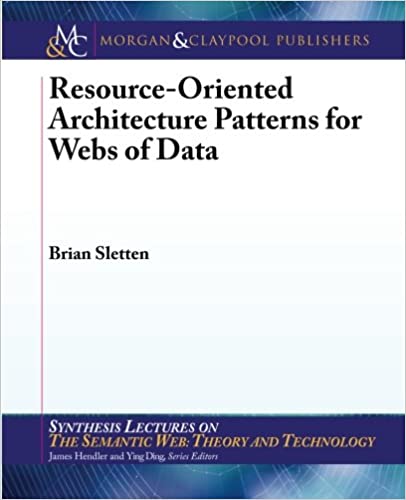
The surge of interest in the REpresentational State Transfer (REST) architectural style, the Semantic Web, and Linked Data has resulted in the development of innovative, flexible, and powerful systems that embrace one or more of these compatible technologies. However, most developers, architects, Information Technology managers, and platform owners have only been exposed to the basics of resource-oriented architectures. This book is an attempt to catalog and elucidate several reusable solutions that have been seen in the wild in the now increasingly familiar "patterns book" style. These are not turn key implementations, but rather, useful strategies for solving certain problems in the development of modern, resource-oriented systems, both on the public Web and within an organization's firewalls. Table of Contents: List of Figures / Informational Patterns / Applicative Patterns / Procedural Patterns.
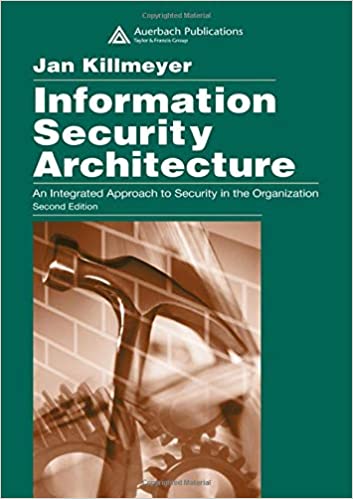
Information Security Architecture, Second Edition incorporates the knowledge developed during the past decade that has pushed the information security life cycle from infancy to a more mature, understandable, and manageable state. It simplifies security by providing clear and organized methods and by guiding you to the most effective resources available. In addition to the components of a successful Information Security Architecture (ISA) detailed in the previous edition, this volume also discusses computer incident/emergency response. The book describes in detail every one of the eight ISA components. Each chapter provides an understanding of the component and details how it relates to the other components of the architecture. The text also outlines how to establish an effective plan to implement each piece of the ISA within an organization. The second edition has been modified to provide security novices with a primer on general security methods. It has also been expanded to provide veteran security professionals with an understanding of issues related to recent legislation, information assurance, and the latest technologies, vulnerabilities, and responses.
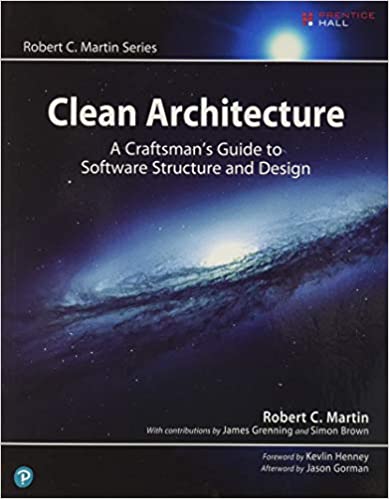
Practical Software Architecture Solutions from the Legendary Robert C. Martin (“Uncle Bob”) By applying universal rules of software architecture, you can dramatically improve developer productivity throughout the life of any software system. Now, building upon the success of his best-selling books Clean Code and The Clean Coder, legendary software craftsman Robert C. Martin (“Uncle Bob”) reveals those rules and helps you apply them. Martin’s Clean Architecture doesn’t merely present options. Drawing on over a half-century of experience in software environments of every imaginable type, Martin tells you what choices to make and why they are critical to your success. As you’ve come to expect from Uncle Bob, this book is packed with direct, no-nonsense solutions for the real challenges you’ll face–the ones that will make or break your projects.
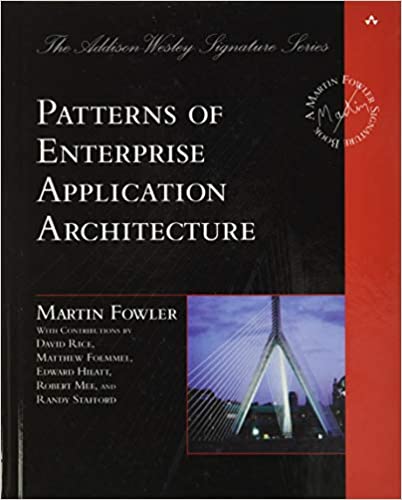
Developers of enterprise applications (e.g reservation systems, supply chain programs, financial systems, etc.) face a unique set of challenges, different than those faced by their desktop system and embedded system peers. For this reason, enterprise developers must uncover their own solutions. In this new book, noted software engineering expert Martin Fowler turns his attention to enterprise application development. He helps professionals understand the complex -- yet critical -- aspects of architecture. While architecture is important to all application development, it is particularly critical to the success of an enterprise project, where issues such as performance and concurrent multi-user access are paramount. The book presents patterns (proven solutions to recurring problems) in enterprise architecture, and the context provided by the author enables the reader to make the proper choices when faced with a difficult design decision.
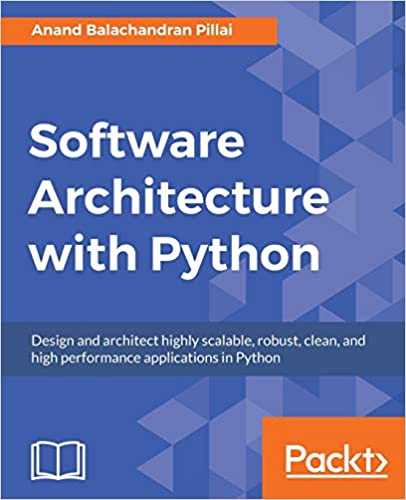
This book starts off by explaining how Python fits into an application architecture. As you move along, you will understand the architecturally significant demands and how to determine them. Later, you'll get a complete understanding of the different architectural quality requirements that help an architect to build a product that satisfies business needs, such as maintainability/reusability, testability, scalability, performance, usability, and security.You will use various techniques such as incorporating DevOps, Continuous Integration, and more to make your application robust. You will understand when and when not to use object orientation in your applications. You will be able to think of the future and design applications that can scale proportionally to the growing business.The focus is on building the business logic based on the business process documentation and which frameworks are to be used when. We also cover some important patterns that are to be taken into account while solving design problems as well as those in relatively new domains such as the Cloud.This book will help you understand the ins and outs of Python so that you can make those critical design decisions that not just live up to but also surpass the expectations of your clients.
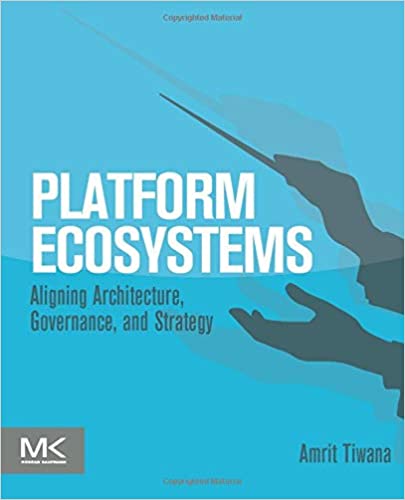
Platform Ecosystems is a hands-on guide that offers a complete roadmap for designing and orchestrating vibrant software platform ecosystems. Unlike software products that are managed, the evolution of ecosystems and their myriad participants must be orchestrated through a thoughtful alignment of architecture and governance. Whether you are an IT professional or a general manager, you will benefit from this book because platform strategy here lies at the intersection of software architecture and business strategy. It offers actionable tools to develop your own platform strategy, backed by original research, tangible metrics, rich data, and cases. You will learn how architectural choices create organically-evolvable, vibrant ecosystems. You will also learn to apply state-of-the-art research in software engineering, strategy, and evolutionary biology to leverage ecosystem dynamics unique to platforms. Read this book to learn how to: • Evolve software products and services into vibrant platform ecosystems • Orchestrate platform architecture and governance to sustain competitive advantage • Govern platform evolution using a powerful 3-dimensional frameworkIf you’re ready to transform platform strategy from newspaper gossip and business school theory to real-world competitive advantage, start right here!
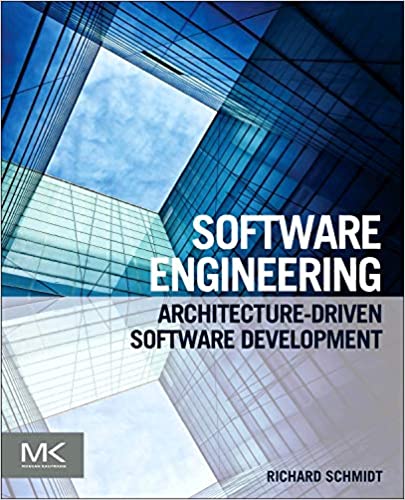
Software Engineering: Architecture-driven Software Development is the first comprehensive guide to the underlying skills embodied in the IEEE's Software Engineering Body of Knowledge (SWEBOK) standard. Standards expert Richard Schmidt explains the traditional software engineering practices recognized for developing projects for government or corporate systems.Software engineering education often lacks standardization, with many institutions focusing on implementation rather than design as it impacts product architecture. Many graduates join the workforce with incomplete skills, leading to software projects that either fail outright or run woefully over budget and behind schedule.Additionally, software engineers need to understand system engineering and architecture―the hardware and peripherals their programs will run on. This issue will only grow in importance as more programs leverage parallel computing, requiring an understanding of the parallel capabilities of processors and hardware. This book gives both software developers and system engineers key insights into how their skillsets support and complement each other. With a focus on these key knowledge areas, Software Engineering offers a set of best practices that can be applied to any industry or domain involved in developing software products.
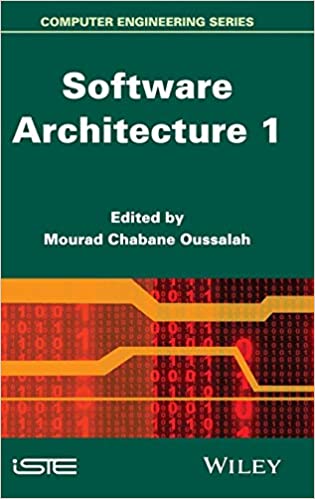
Over the past 20 years, software architectures have significantly contributed to the development of complex and distributed systems. Nowadays, it is recognized that one of the critical problems in the design and development of any complex software system is its architecture, i.e. the organization of its architectural elements. Software Architecture presents the software architecture paradigms based on objects, components, services and models, as well as the various architectural techniques and methods, the analysis of architectural qualities, models of representation of architectural templates and styles, their formalization, validation and testing and finally the engineering approach in which these consistent and autonomous elements can be tackled.
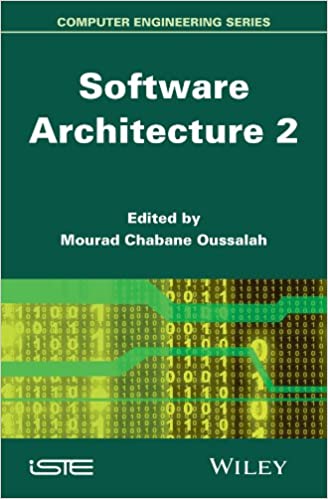
Over the past 20 years, software architectures have significantly contributed to the development of complex and distributed systems. Nowadays, it is recognized that one of the critical problems in the design and development of any complex software system is its architecture, i.e. the organization of its architectural elements.Software Architecture presents the software architecture paradigms based on objects, components, services and models, as well as the various architectural techniques and methods, the analysis of architectural qualities, models of representation of architectural templates and styles, their formalization, validation and testing and finally the engineering approach in which these consistent and autonomous elements can be tackled.
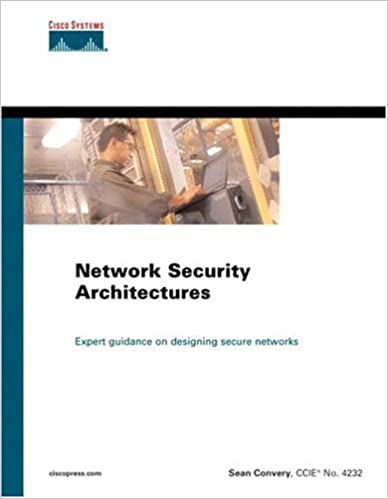
A definitive how-to guide to the Cisco security blueprint examines a wide variety of security issues and concepts, furnishes a broad overview of the ins and outs of implementing a comprehensive security plan--from identifying security threats to defending a network--and discusses specific solutions to a variety of security problems.
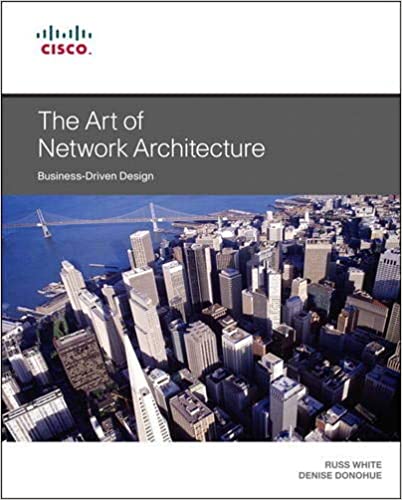
The business-centered, business-driven guide to architecting and evolving networks The Art of Network Architecture is the first book that places business needs and capabilities at the center of the process of architecting and evolving networks. Two leading enterprise network architects help you craft solutions that are fully aligned with business strategy, smoothly accommodate change, and maximize future flexibility. Russ White and Denise Donohue guide network designers in asking and answering the crucial questions that lead to elegant, high-value solutions. Carefully blending business and technical concerns, they show how to optimize all network interactions involving flow, time, and people. The authors review important links between business requirements and network design, helping you capture the information you need to design effectively. They introduce today’s most useful models and frameworks, fully addressing modularity, resilience, security, and management. Next, they drill down into network structure and topology, covering virtualization, overlays, modern routing choices, and highly complex network environments. In the final section, the authors integrate all these ideas to consider four realistic design challenges: user mobility, cloud services, Software Defined Networking (SDN), and today’s radically new data center environments.
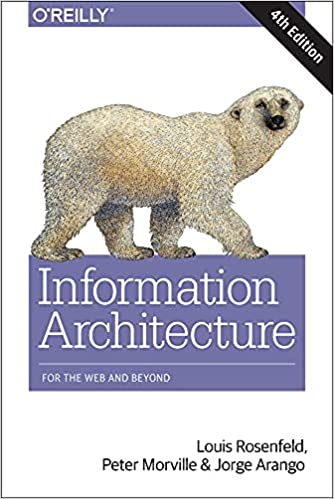
Information architecture (IA) is far more challenging—and necessary—than ever. With the glut of information available today, anything your organization wants to share should be easy to find, navigate, and understand. But the experience you provide has to be familiar and coherent across multiple interaction channels, from the Web to smartphones, smartwatches, and beyond.To guide you through this broad ecosystem, this popular guide—now in its fourth edition—provides essential concepts, methods, and techniques for digital design that have withstood the test of time. UX designers, product managers, developers, and anyone involved in digital design will learn how to create semantic structures that will help people engage with your message.
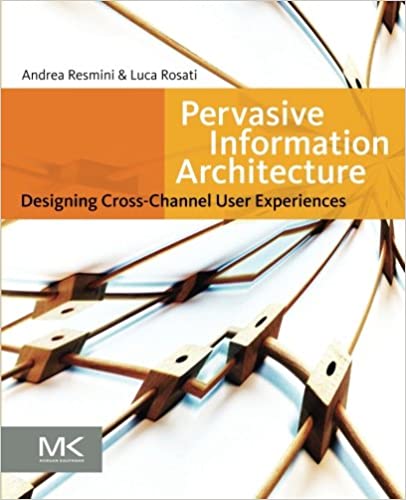
Pervasive Information Architecture explains the ‘why’ and ‘how’ of pervasive information architecture (IA) through detailed examples and real-world stories. It offers insights about trade-offs that can be made and techniques for even the most unique design challenges. The book will help readers master agile information structures while meeting their unique needs on such devices as smart phones, GPS systems, and tablets.The book provides examples showing how to: model and shape information to adapt itself to users’ needs, goals, and seeking strategies; reduce disorientation and increase legibility and way-finding in digital and physical spaces; and alleviate the frustration associated with choosing from an ever-growing set of information, services, and goods. It also describes relevant connections between pieces of information, services and goods to help users achieve their goals.This book will be of value to practitioners, researchers, academics, and students in user experience design, usability, information architecture, interaction design, HCI, web interaction/interface designer, mobile application design/development, and information design. Architects and industrial designers moving into the digital realm will also find this book helpful.
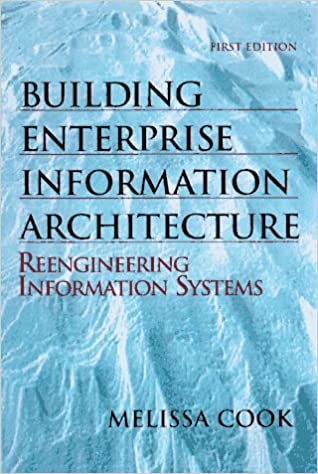
The manager's guide to building a business-oriented information systems architecture. Written for IS and corporate management, CIOs, and consultants. Provides a practical, easy-to-use framework for developing and implementing an enterprise information architecture aligned with business requirements. Learn to eliminate redundancy, control costs, and deploy new technology in an orderly way.
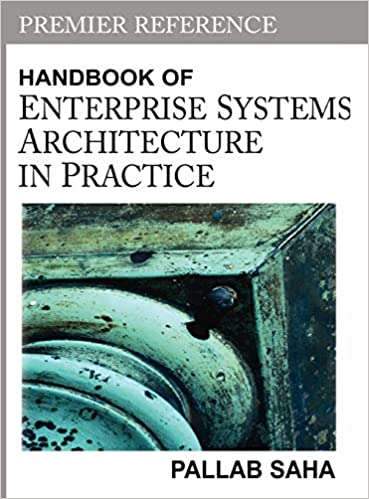
Enterprise architecture (EA) is the organizing logic for a firms core business processes and IT capabilities captured in a set of policies and technical choices. Handbook of Enterprise Systems Architecture in Practice provides a comprehensive and unified reference overview of practical aspects of enterprise architecture. This Premier Reference Source includes a complete analysis of EA theory, concepts, strategies, implementation challenges, and case studies. The impact of effective enterprise architecture on IT governance, IT portfolio management, IT risks, and IT outsourcing are described in this authoritative reference tool. Researchers and IT professionals will gain insights into how firms can maximize the business value of IT and increase competitiveness.
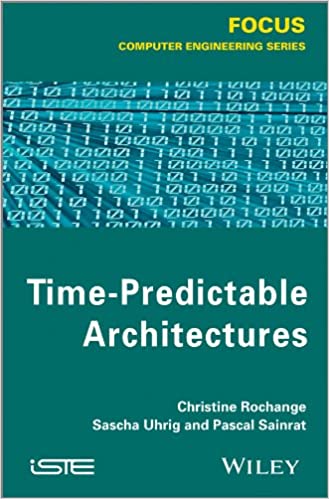
Building computers that can be used to design embedded real-time systems is the subject of this title. Real-time embedded software requires increasingly higher performances. The authors therefore consider processors that implement advanced mechanisms such as pipelining, out-of-order execution, branch prediction, cache memories, multi-threading, multicore architectures, etc. The authors of this book investigate the time predictability of such schemes.
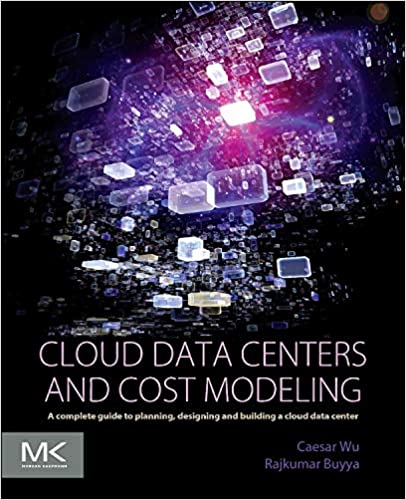
Cloud Data Centers and Cost Modeling establishes a framework for strategic decision-makers to facilitate the development of cloud data centers. Just as building a house requires a clear understanding of the blueprints, architecture, and costs of the project; building a cloud-based data center requires similar knowledge. The authors take a theoretical and practical approach, starting with the key questions to help uncover needs and clarify project scope. They then demonstrate probability tools to test and support decisions, and provide processes that resolve key issues. After laying a foundation of cloud concepts and definitions, the book addresses data center creation, infrastructure development, cost modeling, and simulations in decision-making, each part building on the previous. In this way the authors bridge technology, management, and infrastructure as a service, in one complete guide to data centers that facilitates educated decision making.
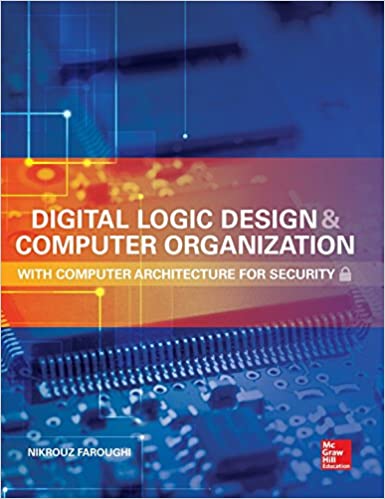
A COMPREHENSIVE GUIDE TO THE DESIGN & ORGANIZATION OF MODERN COMPUTING SYSTEMSDigital Logic Design and Computer Organization with Computer Architecture for Security provides practicing engineers and students with a clear understanding of computer hardware technologies. The fundamentals of digital logic design as well as the use of the Verilog hardware description language are discussed. The book covers computer organization and architecture, modern design concepts, and computer security through hardware.Techniques for designing both small and large combinational and sequential circuits are thoroughly explained. This detailed reference addresses memory technologies, CPU design and techniques to increase performance, microcomputer architecture, including "plug and play" device interface, and memory hierarchy. A chapter on security engineering methodology as it applies to computer architecture concludes the book. Sample problems, design examples, and detailed diagrams are provided throughout this practical resource.
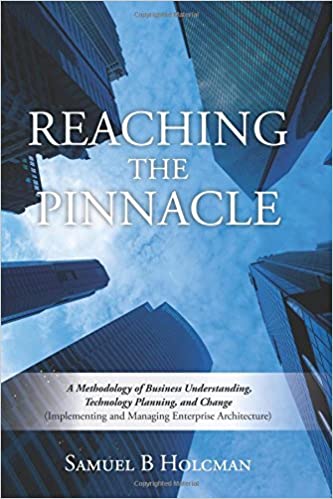
Reaching the Pinnacle: A Methodology of Business Understanding, Technology Planning, and Change (Implementing and Managing Enterprise Architecture)” by Samuel B. Holcman explains the detailed process of building an enterprise architecture. Samuel B. Holcman brings his strategic business plans to business and technology professionals with “Reaching the Pinnacle: A Methodology of Business Understanding, Technology Planning, and Change (Implementing and Managing Enterprise Architecture).” In order to bring a method to the madness that can often be today’s business structure, Holcman uses “Reaching the Pinnacle” to introduce the process of building an enterprise architecture. Holcman uses his 40 years of experience as a leading trainer and consultant in enterprise architecture in writing “Reaching the Pinnacle.” He explains enterprise architecture as the rethinking of how business planning and information technology work together in order to achieve strategic goals. “Reaching the Pinnacle” explains how an organization and its important departments can achieve their goals through a series of project initiatives. Holcman offers a simple, easy-to-understand way to implement an enterprise architecture project into one’s organization. “While the approach is not quick – it may take up to a few years to transform an organization – my methodology provides an effective means for moving the organization from its as-is state to its desired state in an iterative manner,” says Holcman. Holcman’s methods and approach have been used by numerous Fortune 500 companies and have led him to be the top consultant on the topic. He believes the ‘for practitioners, by practitioners’ approach of “Reaching the Pinnacle” will make the book a crucial resource among business and technology personnel everywhere.

The first start-to-finish, step-by-step guide to modeling and designing SOA. Using Service-Oriented Architecture (SOA), enterprises can deliver high-value business services more rapidly and effectively, and gain unprecedented flexibility and value from existing IT infrastructure. SOA has earned the support of virtually every major software provider, and some 75% of enterprises surveyed are now investing in SOA technology and expertise. In Service-Oriented Architecture: Concepts, Technology, and Design, the author of 2004's best-selling SOA book presents the first end-to-end-tutorial for modeling and designing successful service-oriented architectures from the ground up. Writing in plain English, Thomas Erl provides step-by-step process descriptions for analyzing and designing any service or service-oriented business process definition.
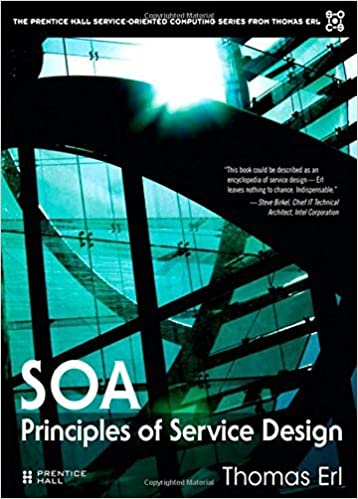
The Definitive Guide to Service EngineeringThe key to succeeding with service-oriented architecture (SOA) is in comprehending the meaning and significance of its most fundamental building block: the service. It is through an understanding of service design that truly “service-oriented” solution logic can be created in support of achieving the strategic goals associated with SOA and service-oriented computing. Bestselling SOA author Thomas Erl guides you through a comprehensive, insightful, and visually rich exploration of the service-orientation design paradigm, revealing exactly how services should and should not be designed for real-world SOA.
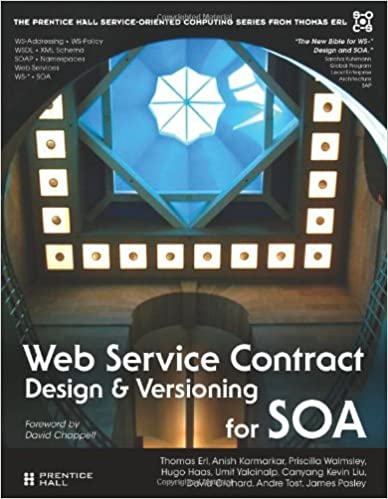
The Ultimate Guide for Designing and Governing Web Service Contracts For Web services to succeed as part of SOA, they require balanced, effective technical contracts that enable services to be evolved and repeatedly reused for years to come. Now, a team of industry experts presents the first end-to-end guide to designing and governing Web service contracts.
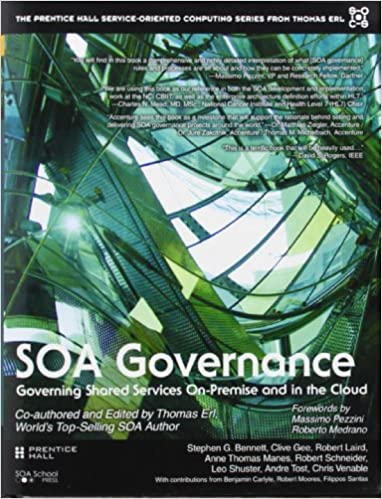
SOA Governance: Governing Shared Services On-Premise and in the Cloud is the result of a multi-year project to collect proven industry practices for establishing IT governance controls specific to the adoption of SOA and service-orientation. Authored by world-renowned experts in the fields of SOA, IT governance, and cloud computing, this comprehensive book provides clear direction as to what does and does not constitute SOA governance and then steps the reader through the most important industry governance practices, as they pertain to individual SOA project lifecycle stages. With a consistent, vendor-neutral focus, and with the help of case study examples, the authors demonstrate how to define and position precepts, organizational roles, processes, standards, and metrics. Readers benefit from thorough and visually depicted cross-references and mapping between roles, processes, precepts, and project stages, enabling them to fully explore dynamics and dependencies and thereby learn how to use these governance controls to create their own custom SOA governance systems.
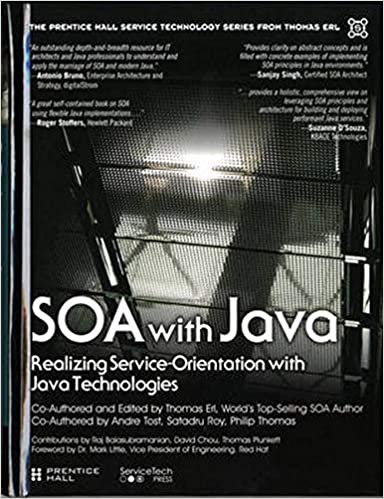
The Definitive Guide to Building Service-Oriented Solutions with Lightweight and Mainstream Java TechnologiesJava has evolved into an exceptional platform for building Web-based enterprise services. In SOA with Java, Thomas Erl and several world-class experts guide you in mastering the principles, best practices, and Java technologies you need to design and deliver high-value services and service-oriented solutions. You’ll learn how to implement SOA with lightweight frameworks, mainstream Java services technologies, and contemporary specifications and standards. To demonstrate real-world examples, the authors present multiple case study scenarios. They further demystify complex concepts with a plain-English writing style. This book will be valuable to all developers, analysts, architects, and other IT professionals who want to design and implement Web-based service-oriented architectures and enterprise solutions with Java technologies.
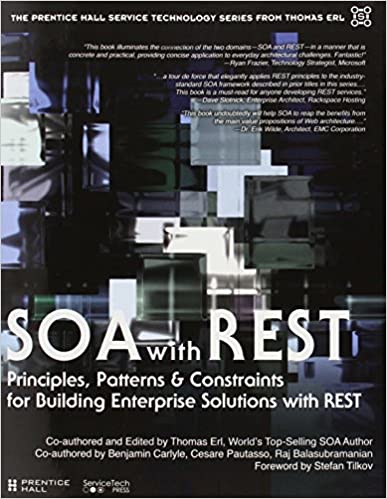
The Definitive Guide to Building Web-Centric SOA with RESTThe World Wide Web is based on the most successful technology architecture in history. It has changed how we view, access, and exchange information and, with the advent of REST, it has also provided us with compelling ways to build and improve automation solutions. REST provides a great deal of guidance to ensure that an architecture and its automation logic are technically sound, though it is still your responsibility to build services that actually add value to your business. SOA with REST is the first comprehensive tutorial and reference for designing and building RESTful services as part of service-oriented solutions and in conjunction with service-oriented architecture (SOA). This book demonstrates that REST is not only a suitable medium for building truly service-oriented solutions, but also that the service-oriented architectural model is a necessary foundation for REST technology architectures to realize their full business potential. The authors provide thorough mapping of REST constraints and architectural goals with service-orientation principles and SOA characteristics. Using real-world examples, they show how to leverage REST’s simplicity, flexibility, and low overhead without compromising the power or manageability of service-oriented solutions and architectures. This book will be valuable to IT architects, developers, and any practitioner seeking to use SOA and REST together.
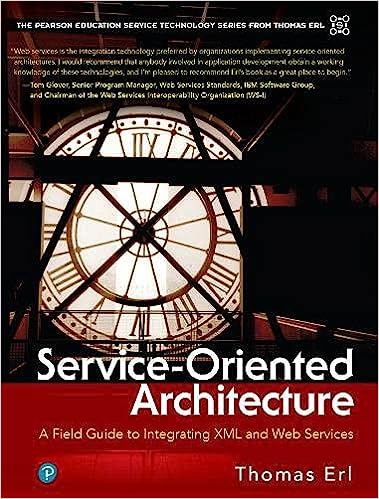
The emergence of key second-generation Web services standards has positioned service-oriented architecture (SOA) as the foremost platform for contemporary business automation solutions. The integration of SOA principles and technology is empowering organizations to build applications with unprecedented levels of flexibility, agility, and sophistication (while also allowing them to leverage existing legacy environments). This guide will help you dramatically reduce the risk, complexity, and cost of integrating the many new concepts and technologies introduced by the SOA platform. It brings together the first comprehensive collection of field-proven strategies, guidelines, and best practices for making the transition toward the service-oriented enterprise.
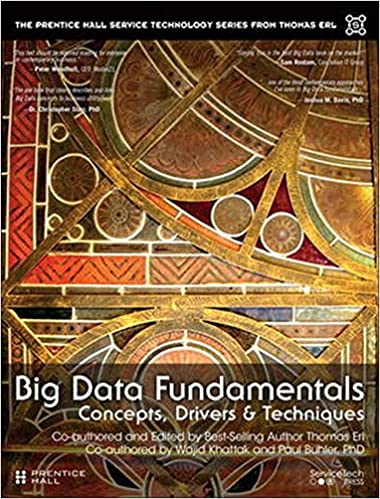
The Definitive Plain-English Guide to Big Data for Business and Technology ProfessionalsBig Data Fundamentals provides a pragmatic, no-nonsense introduction to Big Data. Best-selling IT author Thomas Erl and his team clearly explain key Big Data concepts, theory and terminology, as well as fundamental technologies and techniques. All coverage is supported with case study examples and numerous simple diagrams. The authors begin by explaining how Big Data can propel an organization forward by solving a spectrum of previously intractable business problems. Next, they demystify key analysis techniques and technologies and show how a Big Data solution environment can be built and integrated to offer competitive advantages.
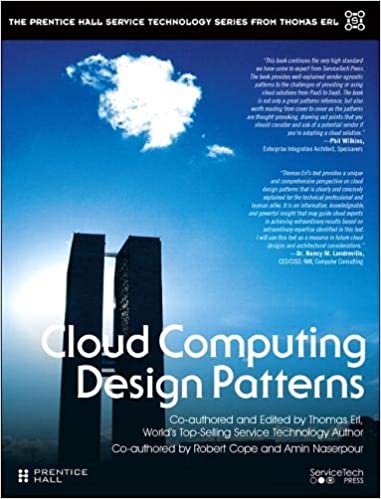
The Definitive Guide to Cloud Architecture and DesignBest-selling service technology author Thomas Erl has brought together the de facto catalog of design patterns for modern cloud-based architecture and solution design. More than two years in development, this book’s 100+ patterns illustrate proven solutions to common cloud challenges and requirements. Its patterns are supported by rich, visual documentation, including 300+ diagrams. The authors address topics covering scalability, elasticity, reliability, resiliency, recovery, data management, storage, virtualization, monitoring, provisioning, administration, and much more. Readers will further find detailed coverage of cloud security, from networking and storage safeguards to identity systems, trust assurance, and auditing. This book’s unprecedented technical depth makes it a must-have resource for every cloud technology architect, solution designer, developer, administrator, and manager.
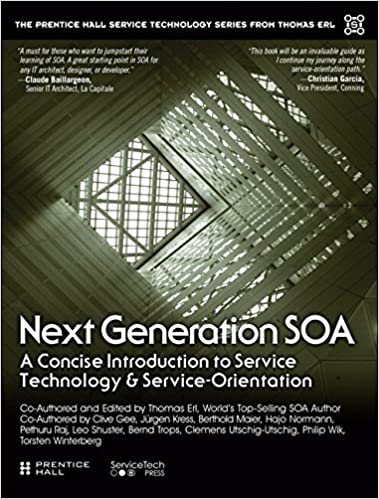
After a decade of innovation in technology and practice, SOA is now a mainstream computing discipline, capable of transforming IT enterprises and optimizing business automation. In Next Generation SOA, top-selling SOA author Thomas Erl and a team of experts present a plain-English tour of SOA, service-orientation, and the key service technologies being used to build sophisticated contemporary service-oriented solutions.
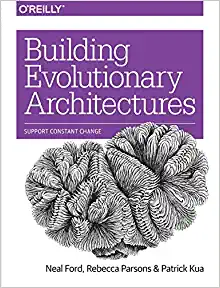
The software development ecosystem is constantly changing, providing a constant stream of new tools, frameworks, techniques, and paradigms. Over the past few years, incremental developments in core engineering practices for software development have created the foundations for rethinking how architecture changes over time, along with ways to protect important architectural characteristics as it evolves. This practical guide ties those parts together with a new way to think about architecture and time.
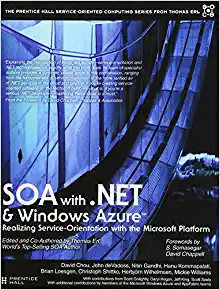
The Authoritative Guide to Building Service-Oriented Solutions with Microsoft .NET Technologies and the Windows Azure Cloud Computing PlatformIn SOA with .NET and Windows Azure, top Microsoft technology experts team up with Thomas Erl to explore service-oriented computing with Microsoft’s latest .NET service technologies and Windows Azure innovations.The authors provide comprehensive documentation of on-premise and cloud-based modern service technology advancements within the Microsoft platform and further show how these technologies have increased the potential for applying and realizing service-orientation practices and goals.
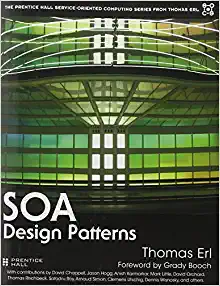
In cooperation with experts and practitioners throughout the SOA community, best-selling author Thomas Erl brings together the de facto catalog of design patterns for SOA and service-orientation. More than three years in development and subjected to numerous industry reviews, the 85 patterns in this full-color book provide the most successful and proven design techniques to overcoming the most common and critical problems to achieving modern-day SOA. Through numerous examples, individually documented pattern profiles, and over 400 color illustrations, this book provides in-depth coverage of: • Patterns for the design, implementation, and governance of service inventories–collections of services representing individual service portfolios that can be independently modeled, designed, and evolved. • Patterns specific to service-level architecture which pertain to a wide range of design areas, including contract design, security, legacy encapsulation, reliability, scalability, and a variety of implementation and governance issues. • Service composition patterns that address the many aspects associated with combining services into aggregate distributed solutions, including topics such as runtime messaging and message design, inter-service security controls, and transformation. • Compound patterns (such as Enterprise Service Bus and Orchestration) and recommended pattern application sequences that establish foundational processes. The book begins by establishing SOA types that are referenced throughout the patterns and then form the basis of a final chapter that discusses the architectural impact of service-oriented computing in general. These chapters bookend the pattern catalog to provide a clear link between SOA design patterns, the strategic goals of service-oriented computing, different SOA types, and the service-orientation design paradigm.
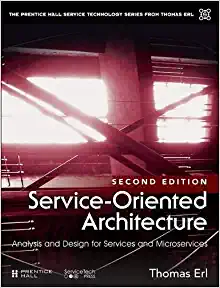
or more than a decade, Thomas Erl’s best-selling Service-Oriented Architecture: Concepts, Technology, and Design has been the definitive end-to-end tutorial on SOA, service-orientation, and service technologies. Now, Erl has thoroughly updated the industry’s de facto guide to SOA to reflect new practices, technologies, and strategies that have emerged through hard-won experience and creative innovation. This Second Edition officially introduces microservices and micro task abstraction as part of service-oriented architecture and its associated service layers. Updated case study examples and illustrations further explain and position the microservice model alongside and in relation to more traditional types of services.
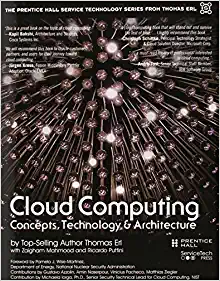
Clouds are distributed technology platforms that leverage sophisticated technology innovations to provide highly scalable and resilient environments that can be remotely utilized by organizations in a multitude of powerful ways. To successfully build upon, integrate with, or even create a cloud environment requires an understanding of its common inner mechanics, architectural layers, and models, as well as an understanding of the business and economic factors that result from the adoption and real-world use of cloud-based services. In Cloud Computing: Concepts, Technology & Architecture, Thomas Erl, one of the world’s top-selling IT authors, teams up with cloud computing experts and researchers to break down proven and mature cloud computing technologies and practices into a series of well-defined concepts, models, technology mechanisms, and technology architectures, all from an industry-centric and vendor-neutral point of view. In doing so, the book establishes concrete, academic coverage with a focus on structure, clarity, and well-defined building blocks for mainstream cloud computing platforms and solutions.
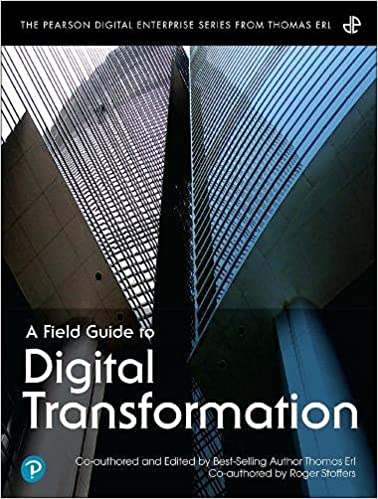
A Field Guide to Digital Transformation is the definitive reference and tutorial for all IT professionals and decision-makers who want to understand digital transformation and successfully achieve it in their own organizations. Best-selling IT author Thomas Erl and long-time practitioner Amin Naserour combine comprehensive coverage of digital transformation as a field of practice, and detailed guidance for adopting digital transformation and executing projects from start to finish.
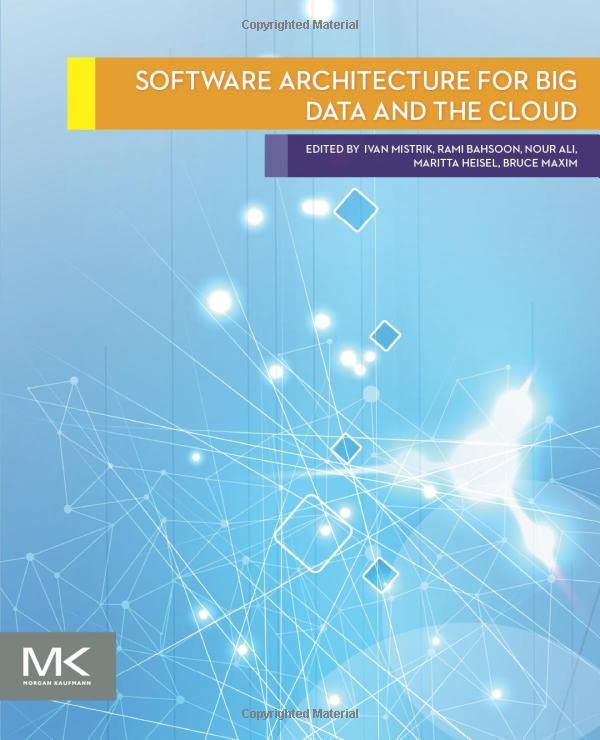
Software Architecture for Big Data and the Cloud is designed to be a single resource that brings together research on how software architectures can solve the challenges imposed by building big data software systems. The challenges of big data on the software architecture can relate to scale, security, integrity, performance, concurrency, parallelism, and dependability, amongst others. Big data handling requires rethinking architectural solutions to meet functional and non-functional requirements related to volume, variety and velocity.The book's editors have varied and complementary backgrounds in requirements and architecture, specifically in software architectures for cloud and big data, as well as expertise in software engineering for cloud and big data. This book brings together work across different disciplines in software engineering, including work expanded from conference tracks and workshops led by the editors.
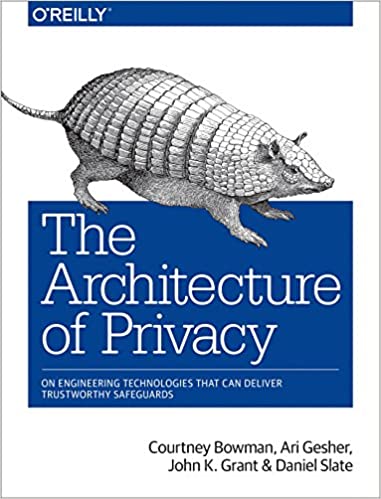
Technology’s influence on privacy not only concerns consumers, political leaders, and advocacy groups, but also the software architects who design new products. In this practical guide, experts in data analytics, software engineering, security, and privacy policy describe how software teams can make privacy-protective features a core part of product functionality, rather than add them late in the development process.Ideal for software engineers new to privacy, this book helps you examine privacy-protective information management architectures and their foundational components—building blocks that you can combine in many ways. Policymakers, academics, students, and advocates unfamiliar with the technical terrain will learn how these tools can help drive policies to maximize privacy protection.
As a working cybersecurity professional, every attempt is made to separate professional and personal endeavors in a manner consistent with reducing conflicts of interest and maintaining ethics. Statements contained within this site are the explicit and implicit goals, objectives, endorsements, and educated opinion of the author of this site and not those of current or former employers.

